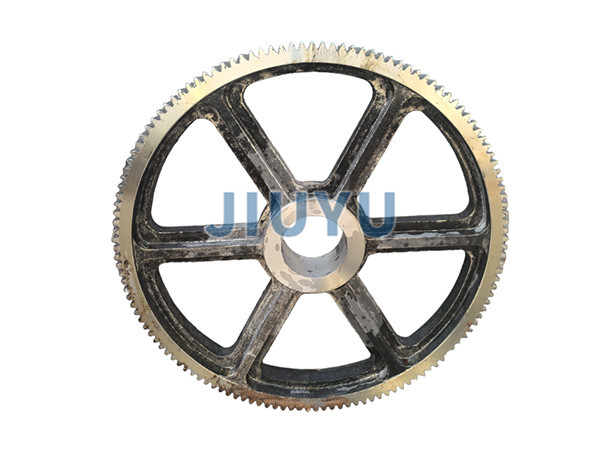
Product Details
Definition and Characteristics
Definition: Usually refers to gears with relatively large tooth tip diameters, which play a key role in industrial transmission systems
Features: Large size, high load-bearing capacity, able to transmit large torque and power, and can work in harsh conditions such as high or low speed, heavy load, etcManufacturing process
Casting: pouring molten metal into a mold to cool and form, suitable for large machinery and heavy-duty transmission, with low cost and good efficiency, but prone to defects such as porosity, which can be improved by meticulous casting and other methods.
Forging: Heating metal billets and forging them into products with good strength and performance, suitable for high load applications. However, the material utilization rate is low and requires high equipment and process requirements, which can be optimized through methods such as forging Cutting processing: Through cutting equipment, precision and shape can be controlled, suitable for mass production and small machinery, with good precision and low cost, but not suitable for large and complex gears Powder metallurgy: sintering metal powder to produce complex shapes and small-sized gears, used in special transmission applications, with high material density and accuracy, but high cost and susceptibility to pollutionApplication Industry
Energy Industry: wind power, hydropower, thermal power plants, nuclear power plants, etc., used to transmit huge energy and convert rotational motion into electricity.
Industrial machinery: widely used in equipment such as machine tools, pumps, compressors, rolling mills, etc., to confirm accurate positioning, smooth movement, and effective energy transmission Transportation: It plays an important role in the power transmission system of ships, trains, and other transportation vehicles. For example, marine gearboxes can transmit engine power to propellers to achieve ship propulsion Installation and Maintenance: There are three installation methods: tangential and longitudinal spring plate installation, as well as rigid connection with the cylinder. The installation of tangential spring plates has definite elasticity, but installation is difficult; Vertical spring plates are easy to install and manufacture, with adjustable surfaces for use, but have poor elasticity; Rigid connections are easy to manufacture and install, but they lose the advantage of elastic connections Maintenance points: Regularly check the wear of gears, including tooth surface wear, tooth root cracks, etc., and replace severely worn gears in a timely manner; Confirm that the lubrication of the gears is good, regularly replace the lubricating oil, and clean the lubrication system; Check the installation accuracy of the gears, adjust them in a timely manner if there is any deviation, and protect the normal meshing of the gears


